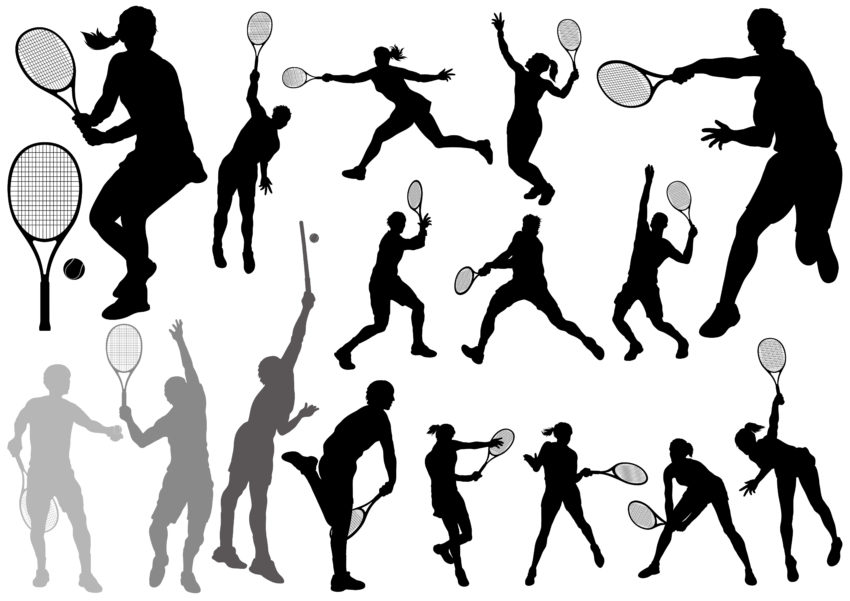The drop shot is one of the most strategically important and notoriously difficult shots in tennis. Executed properly, the drop shot can turn the tide of a match by catching opponents off guard. Mastering the technique takes precision, timing, and practice.
This guide will provide a comprehensive overview of the drop shot, from its technical execution to strategic implementation. With the right dedication and training, adding the drop shot to a player’s arsenal can elevate their game to the next level.
What Exactly is a Drop Shot?
A drop shot is a lightly hit shot that sends the ball just over the net and into the opponent’s court, forcing them to sprint forward to reach it. The ball will bounce low and close to the net, making it difficult to return with power or placement. Unlike deep groundstrokes and aggressive volleys, the drop shot aims to elicit weak returns by depriving opponents of time and limiting their options. Executed well, the shot induces weak returns or clean winners.
Technical Execution: Finesse Over Power
Properly executing a drop shot requires a delicate touch and finesse, rather than brute power. The keys are using an abbreviated backswing, keeping the wrist relaxed and free-flowing, and making controlled, compact contact with the ball. The grip is slightly adjusted, moving back in the hand to facilitate wrist flexibility. The ball should graze the strings, imparting backspin and limiting bounce. The head speeds up gradually through the hitting zone for added control. Weight transfers forward slightly to make clean contact in front of the body. The finish is subdued, with the arm extending towards the target rather than swinging high and across. The decisive factor is feeling – developing a silky, nuanced motion to caress the ball over the net. Power is the enemy of the drop shot.
When and Why Use the Drop Shot
The drop shot is mainly used as a surprise tactic when opponents are caught out of position. Against baseliners, it pulls them into no man’s land out of their comfort zone. When approached by net rushers, the drop shot corners them. Well-disguised, it thwarts their anticipation. The backspin and low bounce cause awkward returns, enabling the drop shot player to seize the offensive. However, it must be used judiciously. Excessive use makes one predictable. The drop shot works best when opponents are struggling, as it accelerates their collapse. When executed in pressure moments, it can utterly demoralise. Tennis legend Roger Federer, renowned for his drop shot artistry, said, “Knowing when to use the drop shot and when not to is one of the biggest secrets.”
Drop Shot Variations
There are several drop shot variations that can be deployed:
- Standard Forehand Drop Shot – Hit crosscourt or down-the-line off either wing. The forehand version allows greater wrist flexibility for finesse.
- Backhand Drop Shot – More difficult due to backhand biomechanics, but effective for surprises.
- Drop Volley – Executed by volleyers at the net to pass opponents. The ultimate touch volley requires deft hands.
- Swinging Drop Volley – Occurs mid-air during an approach, maintaining forward momentum for surprises.
- Half-Volley Drop Shot – Aggressive return off a deep shot, taken immediately after bounce.
- Squash Shot – Severely angled crosscourt drop shot from outside the singles sideline.
Each demands precision shot-making, but expands options to keep opponents guessing.
Common Drop Shot Mistakes and Corrections
| Mistake | Correction |
|---|---|
| Overhitting | Use a light touch and compact stroke |
| Insufficient backspin | Keep wrist loose and brush upward on ball |
| Poor disguise | Vary pace and direction to keep opponent guessing |
| Excessive use | Only use as a surprise, not repetitive strategy |
| Improper footwork | Transfer weight forward smoothly for balance |
| Hitting high over the net | Graze the bottom of ball to keep shot low |
| Executing when opponent in position | Hit when opponent is caught off guard |
| Focusing too much on power | Emphasise control through flexible wrist |
Top 5 Drop Shot Tips
- Disguise it well and hit with unpredictability. Vary pace and direction.
- Look for opportunities when opponents are out of position or struggling.
- Master the light touch and compact stroke needed. Resist overheating.
- Practice extensively to develop feelings. Drop shot drills are essential.
- Use judiciously as a surprise tactic. Don’t become predictable.
To sum up, the drop shot requires meticulous technique, tactical smarts, and repetition to master. For patient players, integrating this shot opens up the court, pulls opponents out of position, and induces weak returns for winners. With the right adjustments and training, the drop shot can elevate any committed tennis player’s skillset and competitiveness. It epitomises the importance of finesse – a lesson for tennis and beyond.

